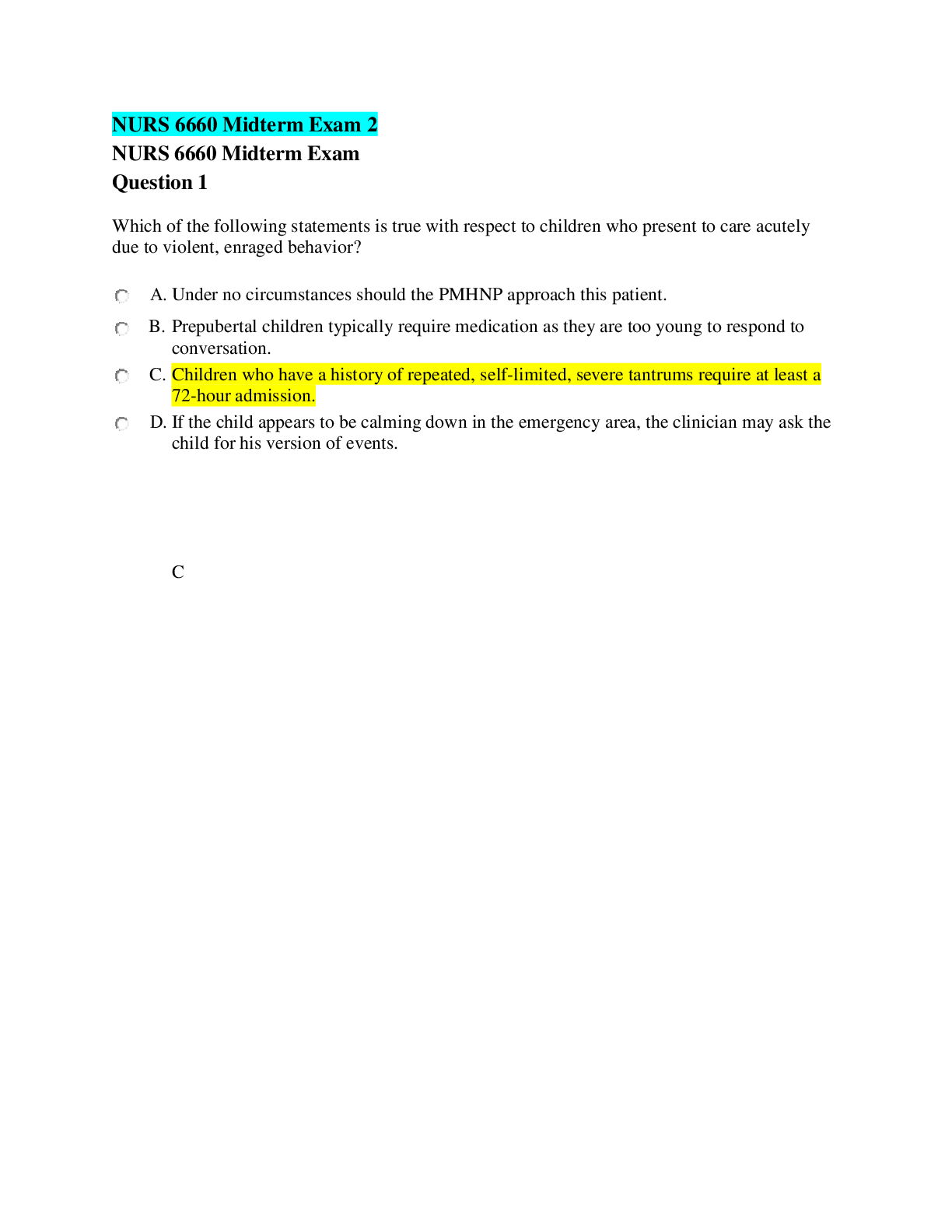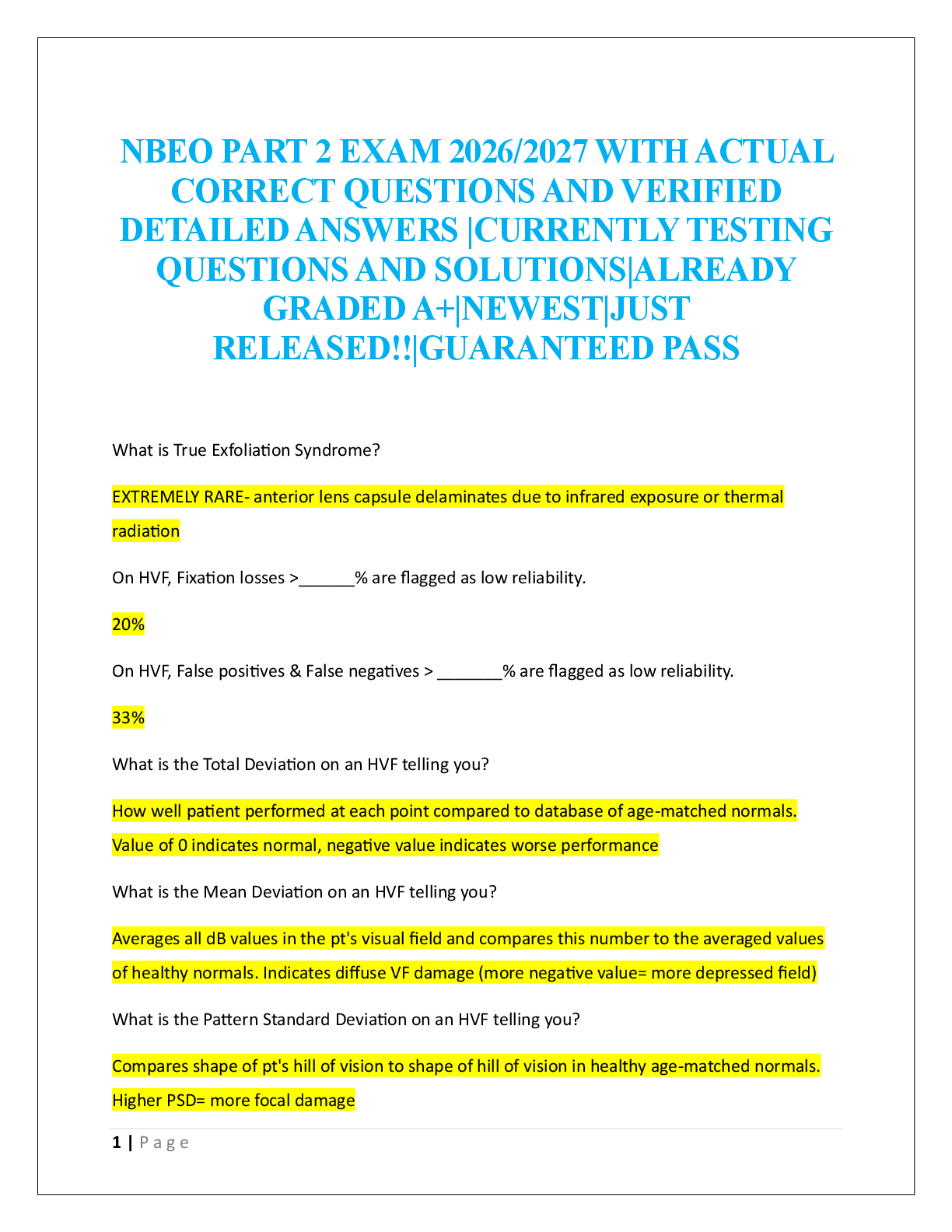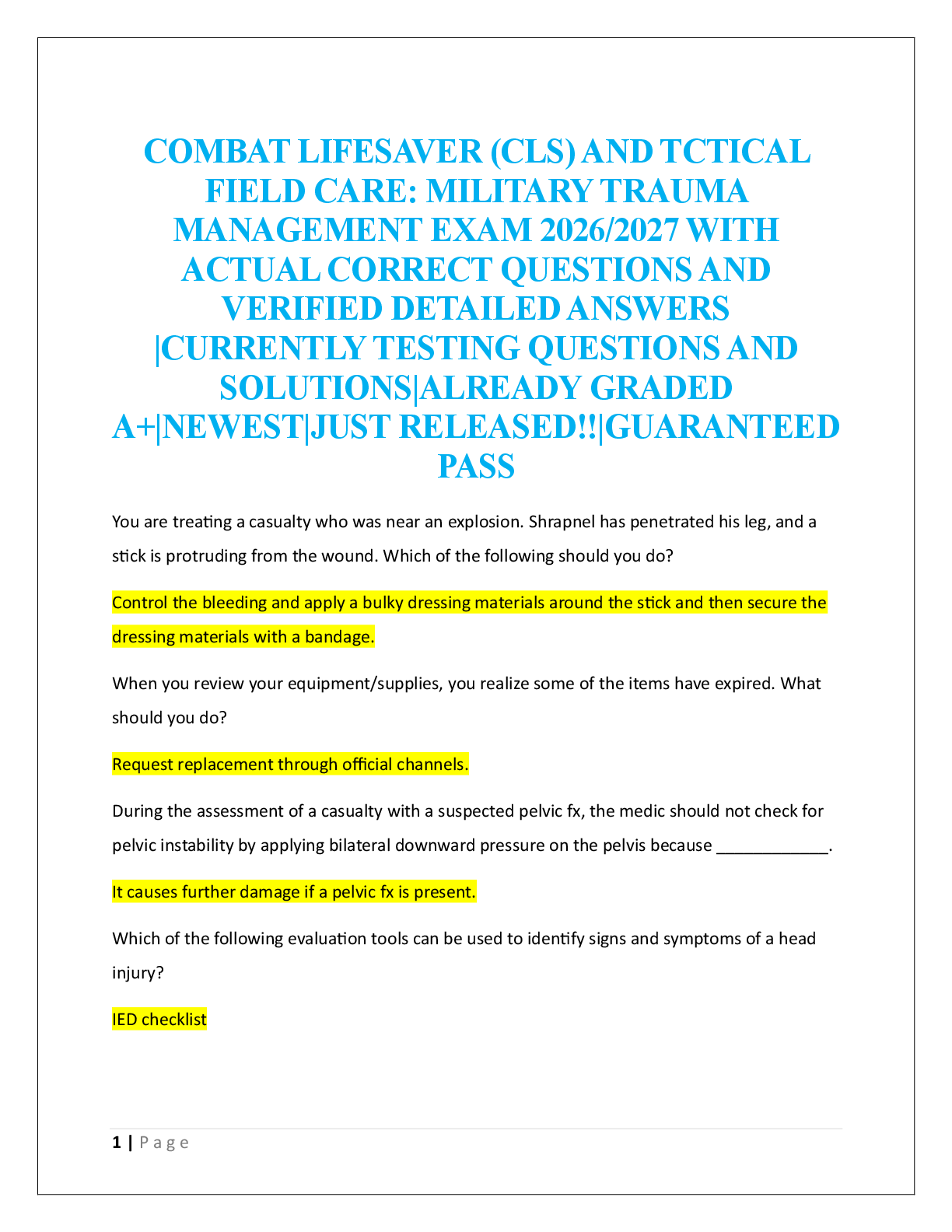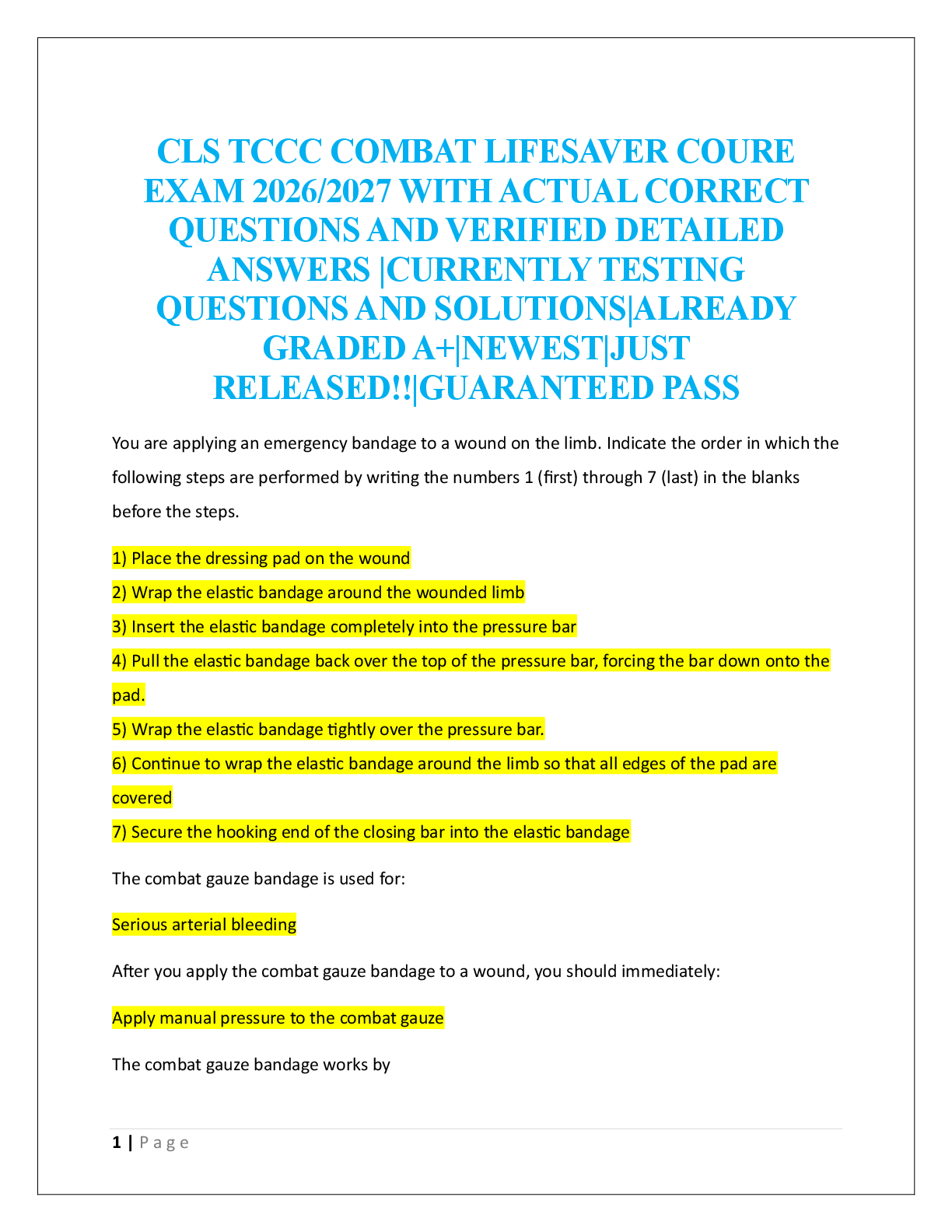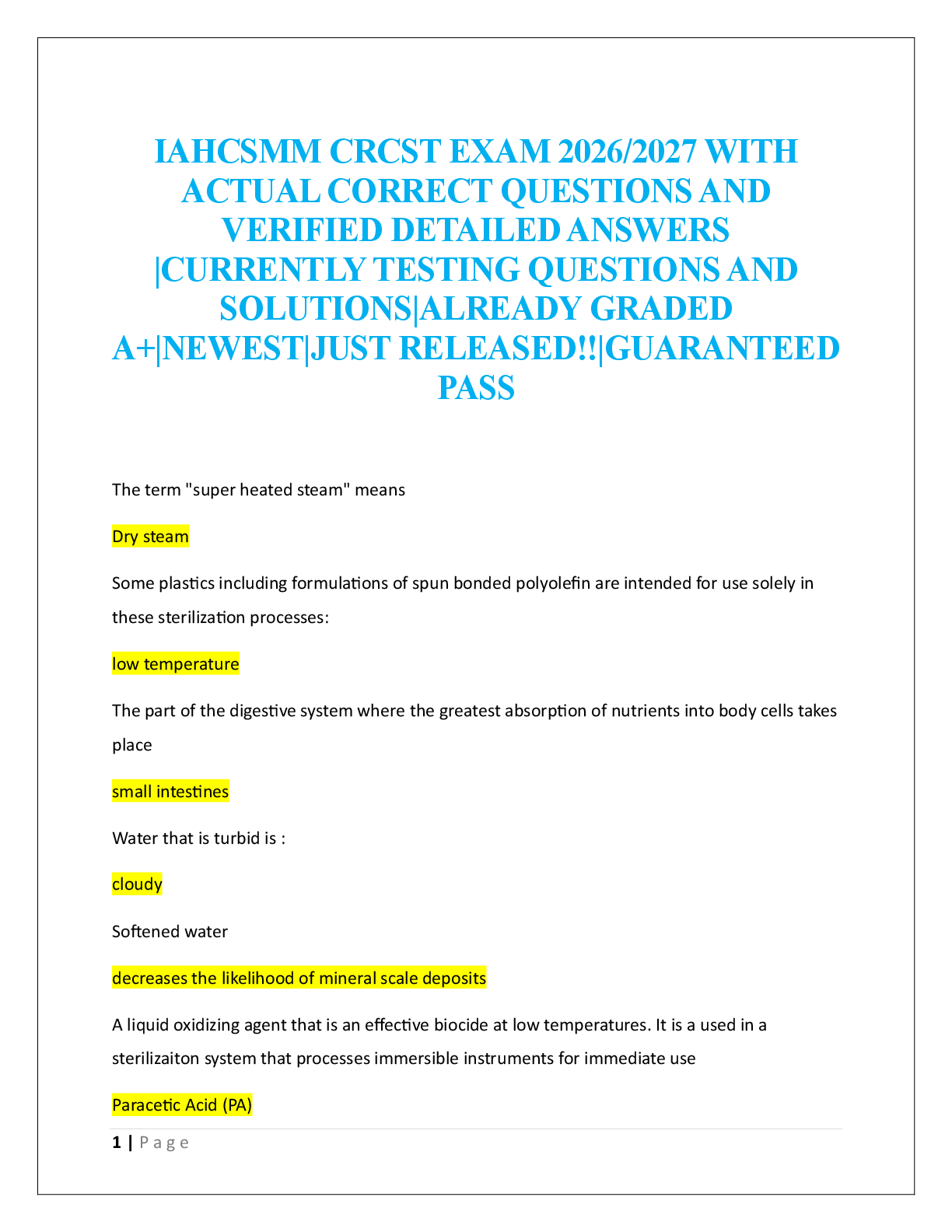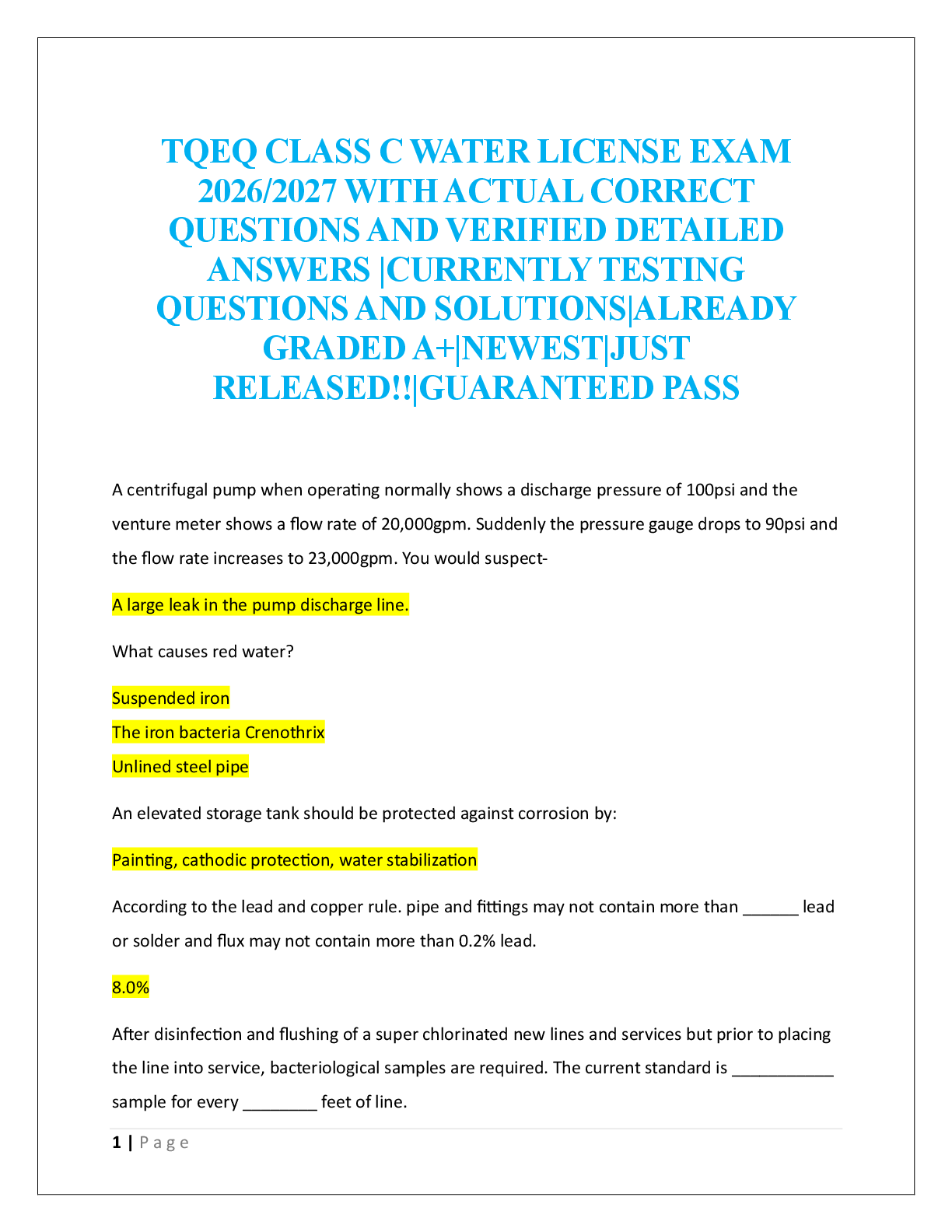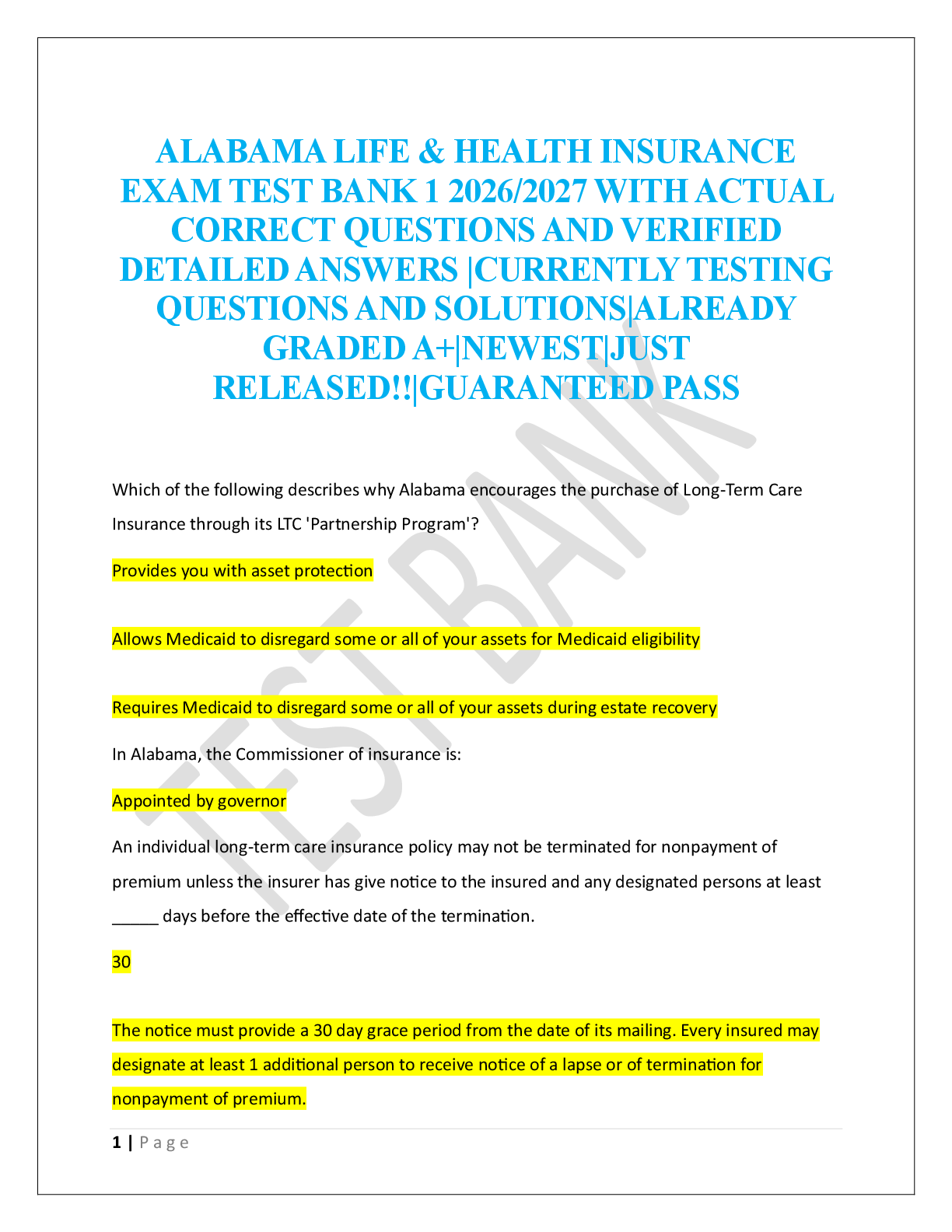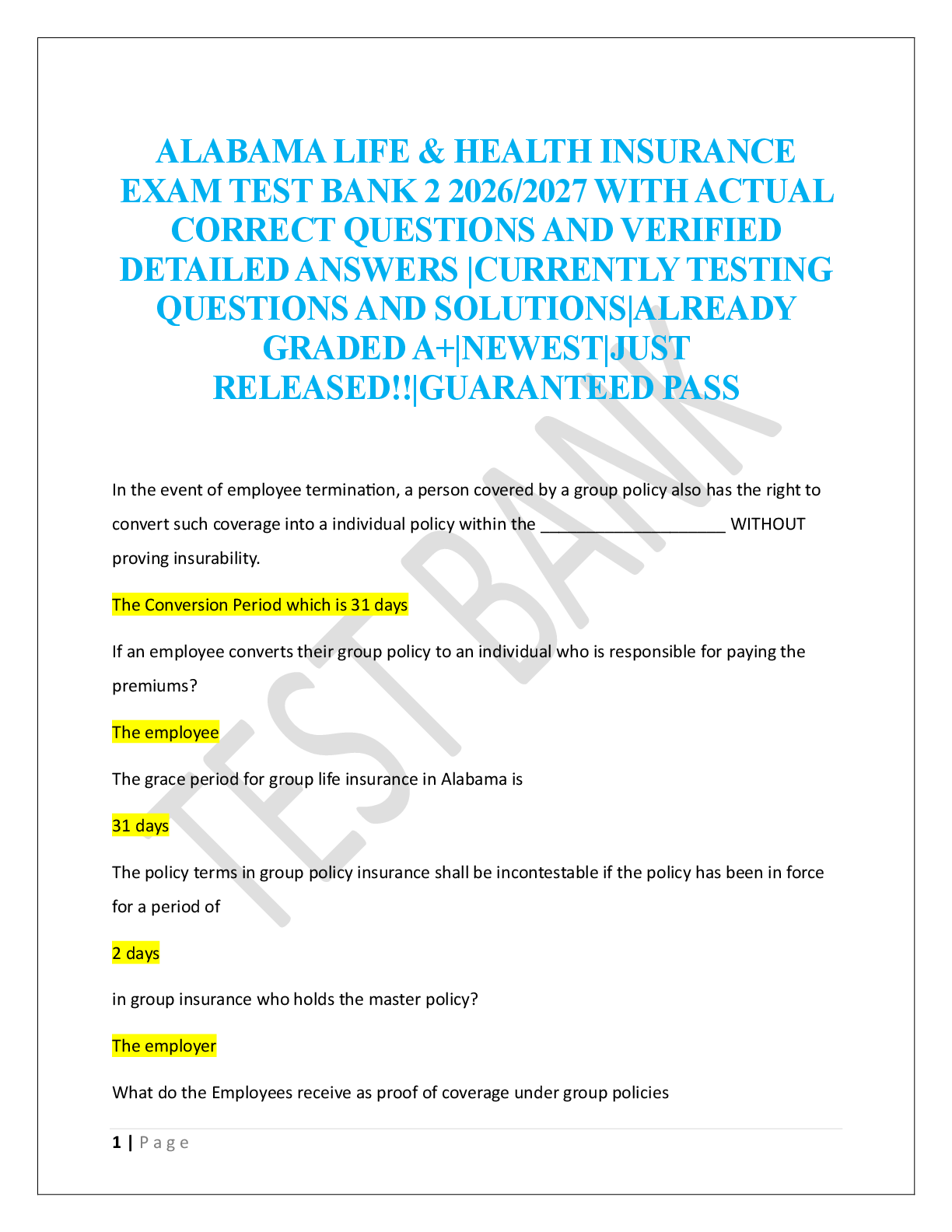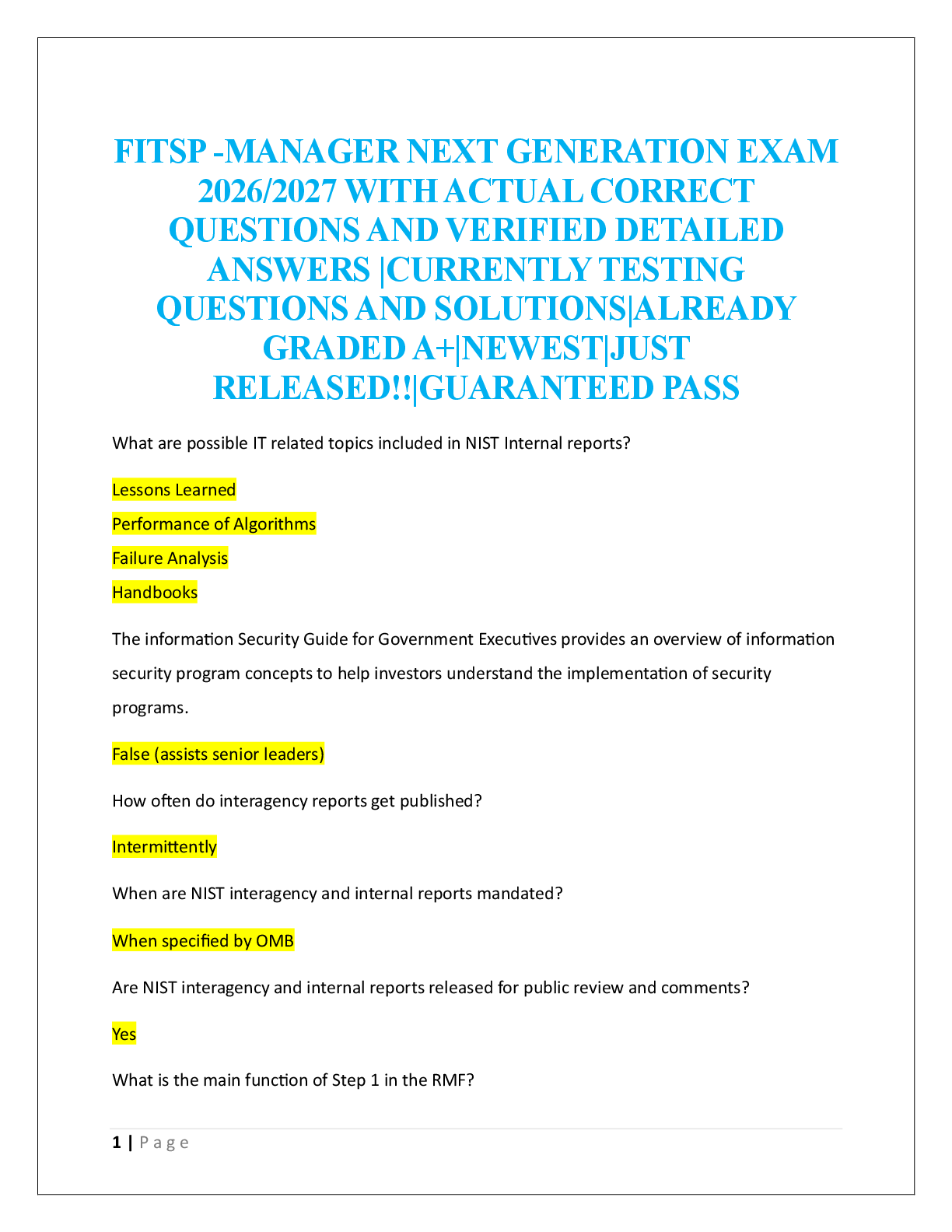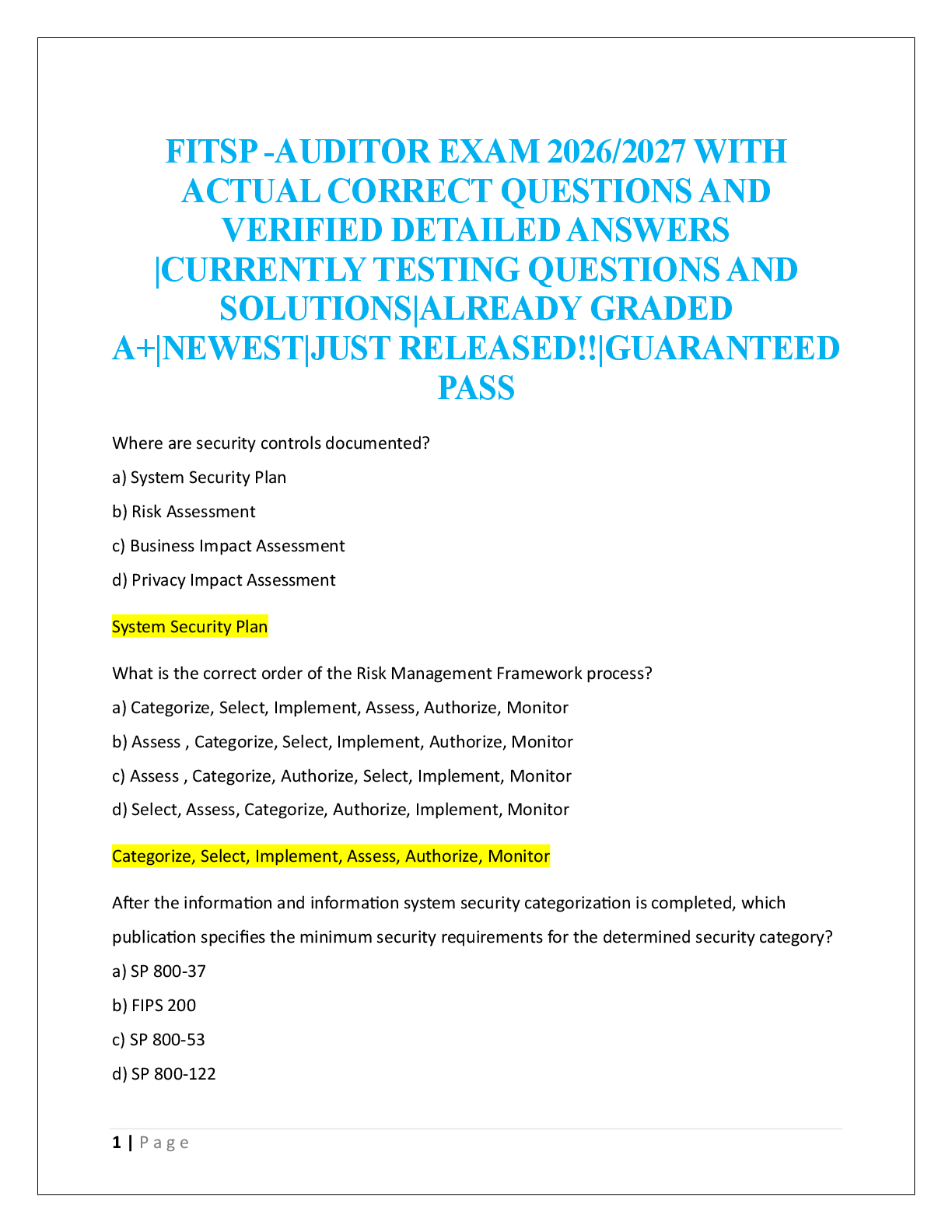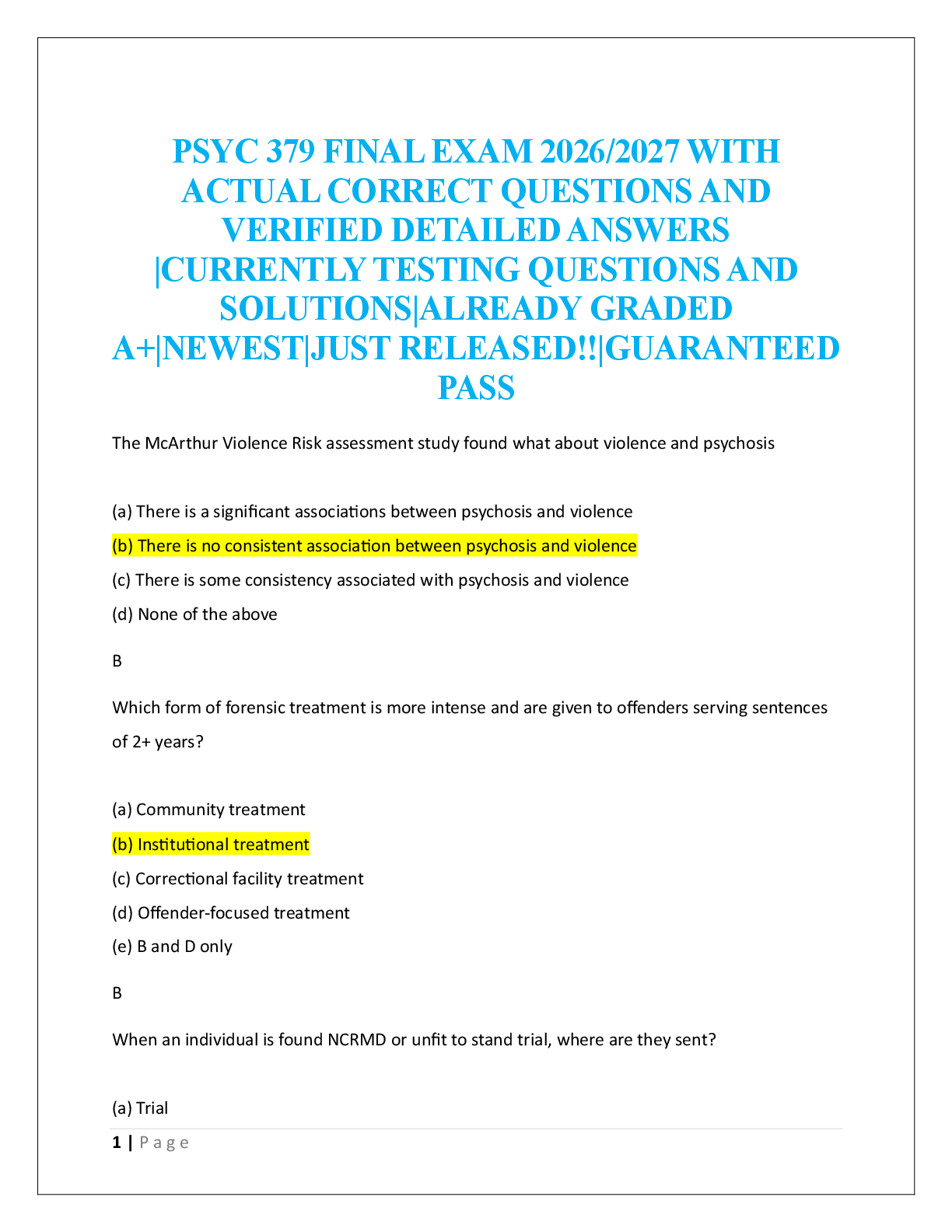*NURSING > EXAM > NR 507 Advanced Pathophysiology. Week 7 Quiz - Chamberlain College of Nursing. 20 Q & A Complete So (All)
NR 507 Advanced Pathophysiology. Week 7 Quiz - Chamberlain College of Nursing. 20 Q & A Complete Solution
Document Content and Description Below
NR 507 Week 7 Quiz 1. Question: A bone breaks in a place where there was pre-existing disease. What type of fracture is being described? 2. Question: Patients with Osteoporosis are at risk for which ... of the following problems? 3. Question: The best screening test for osteoporosis is? 4. Question: Reflux esophagitis is defined as? 5. Question: Which of the following nutritional disorders is characterized by consumption of large amounts of food (binging) followed by self-induced vomiting and/or the use of laxatives (purging)? 6. Question: The most common cause of elevated liver function test is? 7. Question: The chief pathologic feature of degenerative join disease is 8. Question: Gastric ulcers are characterized by 9. Question: An individual is to begin a series of hepatitis B vaccines. You perform a test for a serogical marker, and the results show hepatitis B surface antibodies (HBsAb). You tell the individual that: 10. Question: Pain and inflammation associated with gout are caused by crystallization of ____in the tissue. 11. Question: When evaluating the kidney function of a client with diabetes insipidus (DI) the nurse 12. Question: The diagnosis of rhabdomyolysis is based on the measurement of which laboratory value? 13. Question: A 36 years old reports pain and weakness in the elbow. MRI reveals inflammation of the tendon and the presence of microtears where it attaches to bone. This condition is called? 14. Question: Chronic complications of Diabetes Mellitus (DM) include which of the following? 15. Question: A 56y.o male was admitted to the hospital with a diagnosis of osteomalacia. History reveals that he underwent bariatric surgery 3 years earlier. What is the common link between the surgery and the development of osteomalcia? 16. Question: A 70 y.o. female presents with a hip fracture secondary to osteoporosis. This condition is caused by an increase in bone? 17. Question: Signs common to both type 1 and type 2 diabetes mellitus (DM) include all of the following EXCEPT: 18. Question: Transchondral fractures are most prevalent in? 19. Question: The symptom of polyuria in Diabetes Mellitus (DM) is caused by? 20. Question: The pathophysiology of type 1 Diabetes involves which of the following? [Show More]
Last updated: 1 year ago
Preview 3 out of 14 pages

Loading document previews ...
Buy this document to get the full access instantly
Instant Download Access after purchase
Buy NowInstant download
We Accept:

Reviews( 0 )
$8.50
Can't find what you want? Try our AI powered Search
Document information
Connected school, study & course
About the document
Uploaded On
Jan 23, 2020
Number of pages
14
Written in
All
Additional information
This document has been written for:
Uploaded
Jan 23, 2020
Downloads
1
Views
317



